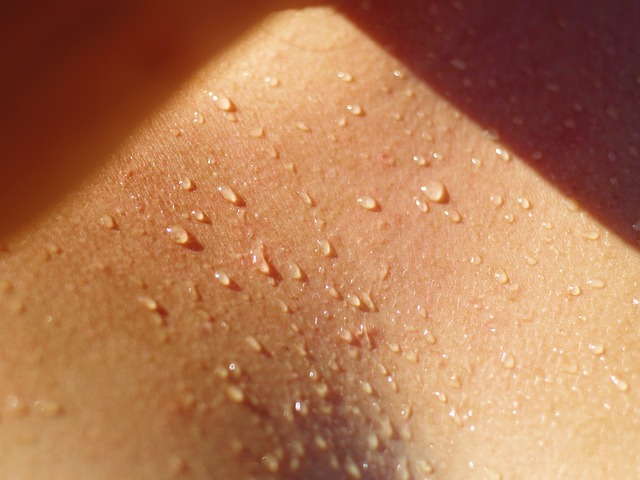Authored By Neil Sadick, MD FAAD, FAACS, FACP, FACPH

Hyperhidrosis, also known as excessive sweating, is a medical condition in which an individual produces more sweat than necessary to regulate their body temperature. This condition affects approximately 3% of the population and can significantly impact an individual’s quality of life. In this blog, we will discuss the symptoms, causes, diagnosis, and treatment options for hyperhidrosis.
Symptoms:
The primary symptom of hyperhidrosis is excessive sweating. The sweating can occur in any part of the body, but it most commonly affects the hands, feet, underarms, and face. The excessive sweating can occur at any time, even when the person is not physically active or in a warm environment. Individuals with hyperhidrosis may also experience the following symptoms:
- Skin irritation
- Unpleasant body odor
- Increased risk of developing skin infections including fungal infections
- Social and emotional distress
Causes:
The exact cause of hyperhidrosis is unknown. However, research suggests that it may be caused by an overactive sympathetic nervous system, which is responsible for regulating sweat production. Hyperhidrosis can also be triggered by certain medical conditions, medications, and lifestyle factors. Some common causes of hyperhidrosis include:
- Hormonal changes during puberty, menopause, or pregnancy
- Medical conditions such as diabetes, hyperthyroidism, and Parkinson’s disease
- Certain medications such as antidepressants and blood pressure medications
- Obesity and a sedentary lifestyle
- Emotional stress and anxiety
Diagnosis:
A medical professional can diagnose hyperhidrosis by conducting a physical examination and reviewing the patient’s medical history. The doctor may also perform certain tests to determine the severity of the condition and rule out underlying medical conditions that may be causing excessive sweating. These tests may include:
- Sweat tests to measure the amount of sweat produced
- Blood tests to check for underlying medical conditions
- Imaging tests such as X-rays or CT scans to check for underlying tumors or abnormalities in the nervous system

Treatment:
The treatment for hyperhidrosis depends on the severity of the condition and the underlying cause. Mild cases of hyperhidrosis can often be managed with lifestyle changes and over-the-counter antiperspirants. The treatment for hyperhidrosis depends on the severity of the condition and the patient’s individual needs. There are several treatment options available for hyperhidrosis, including:
- Antiperspirants: Over-the-counter antiperspirants, such as aluminum chloride hexahydrate, can be effective in managing mild cases of hyperhidrosis. Prescription-strength antiperspirants may also be recommended for more severe cases.
- Medications: Prescription medications, such as anticholinergics or beta-blockers, can help reduce sweating by blocking the nerve signals that trigger sweat production.
- Botox injections: Botox injections can be used to block the nerve signals that stimulate sweat production. This treatment is effective for controlling excessive sweating in the underarms, hands, and feet.
- Iontophoresis: Iontophoresis involves the use of a device that delivers a mild electrical current to the affected area, such as the hands or feet. This treatment can reduce sweating by temporarily blocking sweat gland activity.
- Surgery: In severe cases, surgery may be recommended to remove the sweat glands or cut the nerves that stimulate sweat production. This is typically a last resort option and is reserved for patients who have not responded to other treatments.
As we mentioned depending the patients conditions we may recommend using medical treatments that can be used to treat hyperhidrosis, including anticholinergics, beta-blockers, and antidepressants. For a deeper dive on these lets take a look at some of them.
Anticholinergics, such as glycopyrrolate, work by blocking the action of acetylcholine, a neurotransmitter that stimulates sweat production. These medications are effective in reducing sweating but may cause side effects such as dry mouth, constipation, and blurred vision.
Beta-blockers, such as propranolol, work by blocking the beta receptors in the sympathetic nervous system, which is responsible for regulating sweat production. These medications are effective in reducing sweating, especially in situations where the sweating is triggered by anxiety or stress. However, they may cause side effects such as low blood pressure, fatigue, and dizziness.
Antidepressants, such as selective serotonin reuptake inhibitors (SSRIs), have also been used to treat hyperhidrosis. These medications work by altering the levels of serotonin in the brain, which can help regulate sweating. However, they may cause side effects such as nausea, insomnia, and sexual dysfunction.
It is important to speak with a medical professional to determine the best oral medication for your individual needs. They can help you weigh the pros and cons of each medication and develop a personalized treatment plan.
Additionally, other treatment options such as antiperspirants, Botox injections, iontophoresis, and surgery may also be effective in managing hyperhidrosis. It is important to speak with a medical professional to determine the best treatment option for your individual needs. They can help you weigh the pros and cons of each treatment and develop a personalized treatment plan.

In conclusion, hyperhidrosis is a medical condition that can significantly impact an individual’s quality of life. If you are experiencing excessive sweating, it is important to speak with a medical professional to determine the underlying cause and develop an appropriate treatment plan. With proper diagnosis and treatment, individuals with hyperhidrosis can manage their symptoms and improve their quality of life.
It is important to note that while these treatment options can effectively manage hyperhidrosis, they may not completely eliminate excessive sweating. Additionally, it is essential to consult with a healthcare professional to determine the most appropriate treatment plan for an individual’s specific needs and medical history.
About the Author: Neil Sadick, MD FAAD, FAACS, FACP, FACPH
Dr. Neil Sadick is known as one of the best dermatologists in the world. Author of more that 300 journal articles and over 20 books, he is one of the most influential people in Dermatology. Known as “the Doctor’s doctor” he travels the world training other dermatologists. All of this, along with Dr. Sadick’s research, has led to global innovation in Dermatology.